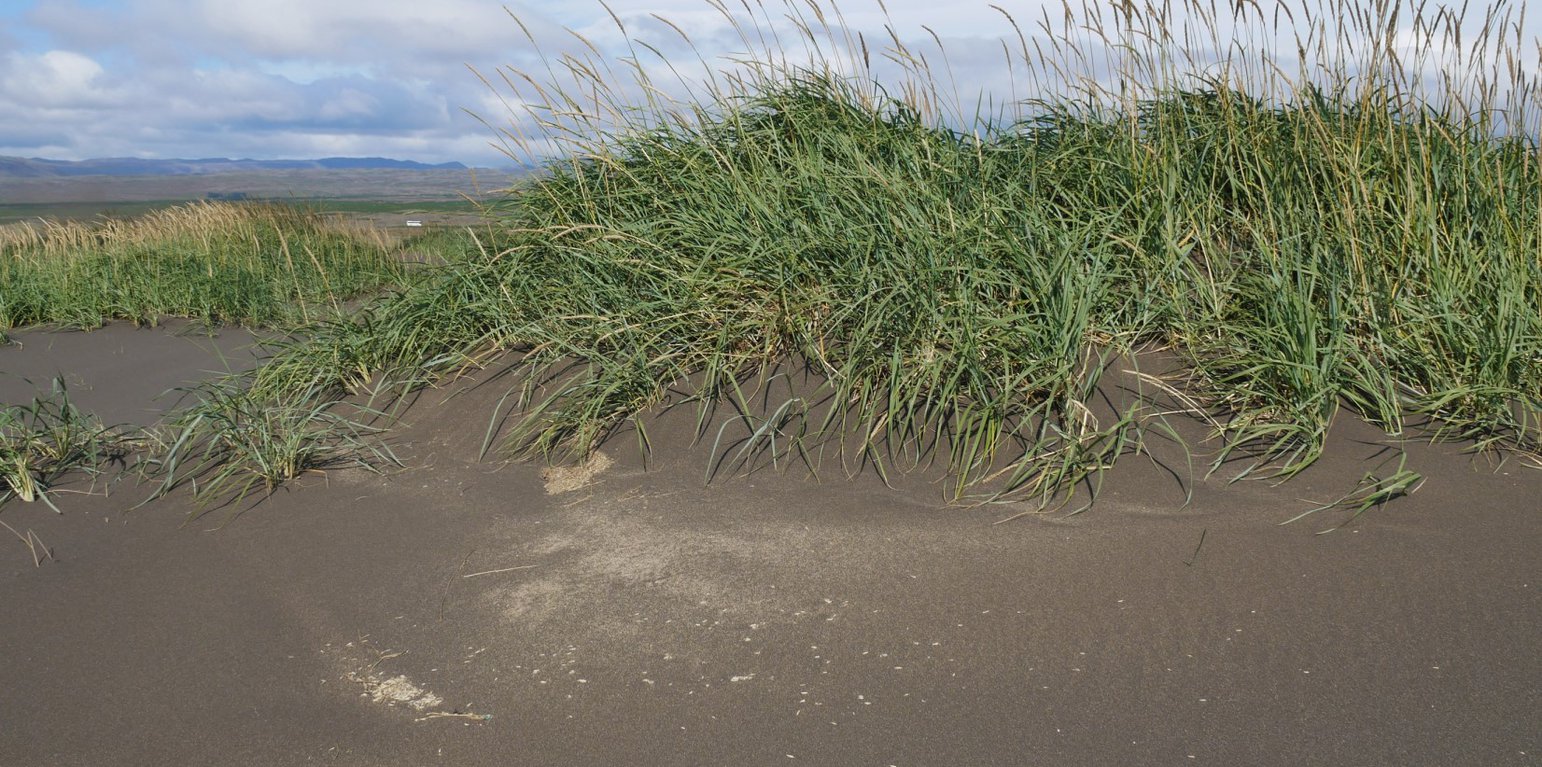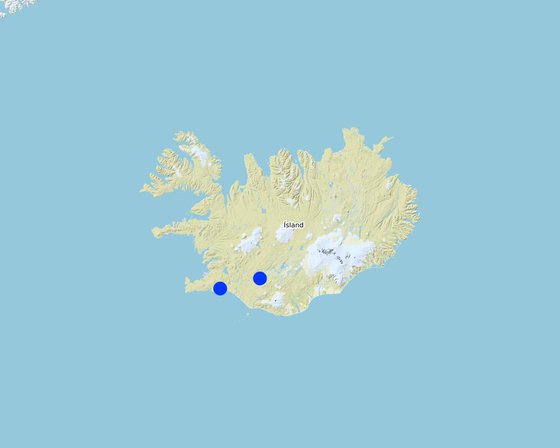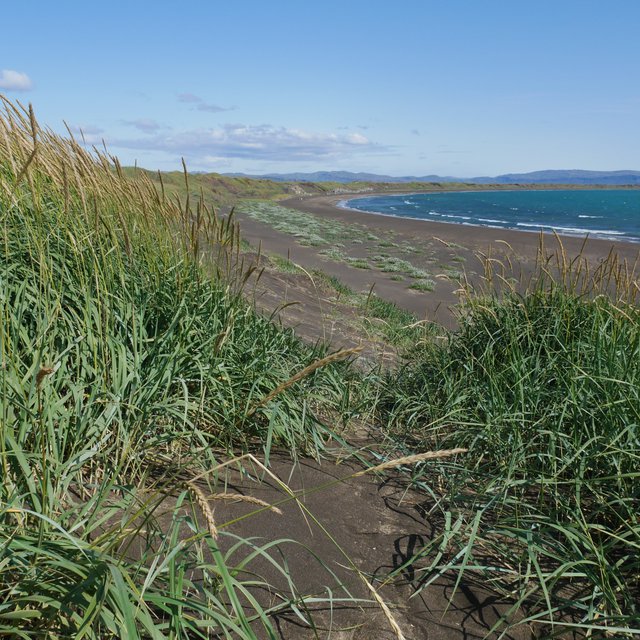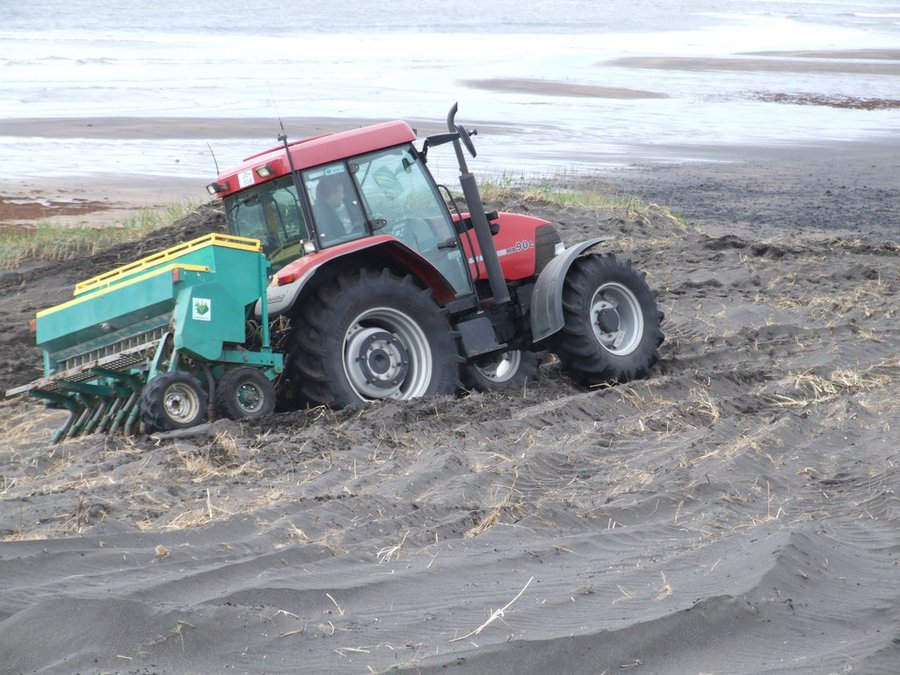



Lyme grass (Leymus arenarius) is a native pioneer plant in Iceland. Due to its spreading, rhizomatous habit it survives and spreads in sand and even in blown sand. The sand can be captured and stabilised, and vegetation cover increases. In this way, new vegetation cover comprising other plants can further develop. Therefore, this plant is used on degraded land with sandy soils to restore and hinder it from further erosion. Wind erosion can be minimized or stopped. Lyme grass protects and prevents the soil from being blown away and from causing damage on- and offsite. For these reasons, it has been applied in various locations throughout Iceland.
Lyme grass is seeded in with machinery in early spring or late autumn over a complete area. Before planting, the seeds have to be treated in order to go through the drilling machine. These seeds are harvested with specialized machinery in September. In order to promote growth and spread, the plants are supported with fertilizer in the four years after application. Normally this activity is carried out in early spring. The use of imported fertilizer is necessary, but quite expensive. Because lyme grass is sensitive to grazing, a fence is often built to protect the area from livestock. In more advanced restored land, seasonally controlled grazing in the summer with sheep can take place again. Sandy areas remain protected because of their vulnerability to wind erosion.
Once planted, lyme grass spreads by itself through rhizomes, and by producing large amounts of seeds every year. It is winter hardy - and copes well with droughts because of its deep roots. Lyme grass is highly appreciated because it brings clear long-term improvement onsite and provides offsite benefits. Onsite, Lyme grass improves soil and vegetation cover and minimizes evaporation from the soil surface. In addition, surface runoff is minimized. Less sediment is transported with the wind and damage to the neighbouring field or private and public infrastructure is minimised offsite. Furthermore, lyme grass can also store large quantities of carbon. Because of its many positive features, this technology is being adopted in many places.

ទីតាំង: Thorlákshöfn and Hekla area, South of Iceland, ប្រទេសអ៊ីស្លង់
ចំនួនទីកន្លែងបច្ចេកទេស ដែលវិភាគ: 2-10 កន្លែង
ការសាយភាយនៃបច្ចេកទេស: ត្រូវបានផ្សព្វផ្សាយត្រឹមតំបន់មួយ (approx. 10-100 គម2)
តើស្ថិតក្នុងតំបន់ការពារអចិន្ត្រៃយ៍?: បាទ/ចា៎
កាលបរិច្ឆេទនៃការអនុវត្ត: 10-50 ឆ្នាំ
ប្រភេទនៃការណែនាំឱ្យអនុវត្តន៍៖




| បញ្ជាក់ពីធាតុចូល | ឯកតា | បរិមាណ | ថ្លៃដើមក្នុងមួយឯកតា (ISK) | ថ្លៃធាតុចូលសរុប (ISK) | % នៃថ្លៃដើមដែលចំណាយដោយអ្នកប្រើប្រាស់ដី |
| ផ្សេងៗ | |||||
| Seeding lyme grass | ha | 1,0 | 203539,0 | 203539,0 | |
| ថ្លៃដើមសរុបក្នុងការបង្កើតបច្ចេកទេស | 203'539.0 | ||||
| ថ្លៃដើមសរុបក្នុងការបង្កើតបច្ចេកទេសគិតជាដុល្លារ | 1'474.92 | ||||
| បញ្ជាក់ពីធាតុចូល | ឯកតា | បរិមាណ | ថ្លៃដើមក្នុងមួយឯកតា (ISK) | ថ្លៃធាតុចូលសរុប (ISK) | % នៃថ្លៃដើមដែលចំណាយដោយអ្នកប្រើប្រាស់ដី |
| ជី និងសារធាតុពុល | |||||
| repeated ferilizer 2. year | ha | 1,0 | 19000,0 | 19000,0 | |
| repeated ferilizer 3. year | ha | 1,0 | 19000,0 | 19000,0 | |
| repeated ferilizer 4. year | ha | 1,0 | 19000,0 | 19000,0 | |
| ថ្លៃដើមសរុបសម្រាប់ការថែទាំដំណាំតាមបច្ចេកទេស | 57'000.0 | ||||
| ថ្លៃដើមសរុបសម្រាប់ការថែទាំដំណាំតាមបច្ចេកទេសគិតជាដុល្លារ | 413.04 | ||||
Less sediment in the air during windstorms due to increased ground cover and therefore fewer health consequences.
The lyme grass can store large amounts of carbon.